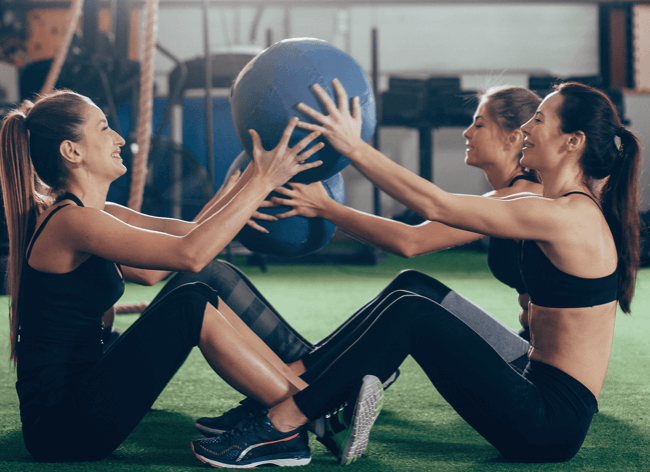Zumba on Monday. Step on Tuesday. Running on Wednesday. Different workouts, same shoe?
Foot health and appropriate footwear is probably that last thing on your mind as you pack your gym bag for the week. But did you know that the shoes we choose have a purpose?
From the hardened sole in dance shoes to the treads in running shoes, every type of shoe is designed to improve performance and reduce the risk of injury for the activity in which it was designed. So how do you know which shoe is best for your workout and how can you get the most out of your sneakers? Below are some basics on finding the perfect shoe.
For chickboxing or step classes – running shoes vs. cross trainers
As the name suggests, running shoes are designed for, well, running. They are typically much lighter than that average cross trainer or aerobics shoes and are designed for heel – toe movements in the linear direction. Conversely, cross trainers are designed for side-to-side or multidirectional movements and provide extra support for the foot and ankle.
If you typically take group exercise classes such as kickboxing or bootcamp, your best option is going with the cross trainer. If you frequently alternate your workouts with running on a treadmill or outdoors, then it may be worth the investment to have both types of shoes.
For Zumba or dance-based classes – dance shoes vs. running shoes
Dance-based classes such as Zumba or Just Dance, are full of pivots and rotations on the toes. This means that the perfect shoe for these classes allows the freedom of movement with minimal traction. A jazz shoe or dance sneaker is designed with a hard sole and flexible arch, allowing for smooth turns, jumps and pivots.
If you take Zumba several times a week, it may be worth the investment of buying jazz shoes as this will reduce the risk of injury to the knees and hips. If jazz shoes are not in the budget, then I recommend cross trainers and not running shoes. The traction of running shoes will restrict the motion of the foot during pivots and rotations which means these movements are forced into the knees.
When are no shoes necessary?
An article about working out and shoes would not be complete without a side note about pilates, yoga and other barefoot-based workouts. With the increasing trend in minimalist shoes including Vibram and Nike Free, people are starting to understand the benefit of strengthening the foot. Integrating barefoot workouts into your weekly fitness schedule will improve your balance, core strength and risk of injury.
Looking for specific recommendations? Check out Dr. Emily’s Top Picks for workout sneakers!
For even more sneaker information check out our previous article: How To Buy Great Workout Sneakers (Because You’re Probably Wearing The Wrong Ones)




















